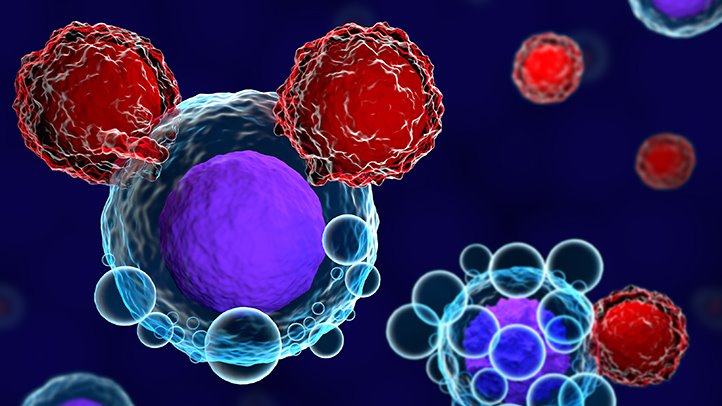New weapons against an old disease: what has changed in our approach to cancer treatment?
Cancer still scares us. There is no universal cure and it will probably never exist. Yet, to be fair, our therapies have much improved. Chemotherapy and radiotherapy are the first that come to mind, but many others are catching on. Our approach to cancer has been changing: information that we have ignored until recently have now become crucial for the generation of new therapies. And we understood something: multiple therapies in combination are better than one.
Our understanding of cancer has increased in the last decades. It is now clear that we cannot target only tumor cells without considering their microenvironment; we cannot attack cancer on only one front, because it may soon become resistant to our treatment; we should use “smart drugs” against very specific features, in order to reduce off-target toxicities and side effects.
Now that we are aware of this, are we able to generate safer and more effective therapies? How do we face cancer today?
There is not a single answer, but the watchword is “combination therapy”. Each treatment has its strengths and weaknesses: the simultaneous administration of two or more drugs working in synergy allows reinforcing the strengths while reducing the weaknesses.
Here we report two examples (still in the preliminary phase) where old and new therapies were combined against aggressive tumors.
Pancreas: radiotherapy, hyperthermia and immunotherapy
Pancreatic cancer has the higher mortality rate amongst all other cancers in both men and women. Diagnosis often comes too late, when the tumor has already spread to other parts of the body and chemotherapy and radiotherapy are no longer effective. With the advent of immunotherapy, many hard-to-treat tumors have become “treatable”, but not pancreatic cancer. That is a very hard nut to crack. Not that researchers have not tried: due to its strongly immunosuppressive microenvironment, even our best immunotherapies are not effective, though.
Nevertheless, when immunotherapy was combined with two other treatments, radiotherapy and hyperthermia, it demonstrated enhanced tumor response. While radiotherapy is commonly used, hyperthermia may sound less familiar. In this treatment, body tissue is exposed to high temperatures generated by electromagnetic waves. Research has shown that high temperatures in the tumor surroundings (39-43 °C) can kill cancer cells (usually with minimal injury to normal tissues) and even enhance radiation induced DNA damage, by inhibiting DNA repair system. Therefore, radiotherapy and hyperthermia are perfect partners but...never two without three!
Hyperthermia does also something else: it renders the tumor microenvironment more immunoresponsive. High temperatures increase the blood flow and lymphocytes trafficking towards the tumor and induce the synthesis of compounds called heat shock proteins, which stimulate an anti-tumor immune response. Further investigations are needed to clarify the clinical potential and optimize doses and time of such a tripartite approach, but we are on the right track. If the three therapies work in synergy, we can use smaller doses of each, alleviating side effects without compromising therapeutic effects.
Melanoma: chemotherapy, electricity and immunotherapy
Combination between electro-chemotherapy and immunotherapy in the treatment of metastatic melanoma is currently under investigation. But what is electro-chemotherapy?
Electro-chemotherapy is a treatment combining low-dose chemotherapy with electroporation. An electric pulse is applied at the site of chemotherapy injection, usually cutaneous or sub-cutaneous metastasis of a variety of cancers, including head-and-neck and melanoma. The cell is temporarily permeabilized, with “pores” forming on its membrane, which allow the drug to enter more easily enhancing its citotoxicity.
Research has also shown that electro-chemotherapy can stimulate an immune response against the tumor, by inducing what is called “immunogenic cell death”. When the tumor cells die, they expose immunogenic molecules, signalling their presence to the immune system. Unfortunately, this response is not strong enough to cause regression of distant metastasis.
Preliminary results showed that immunotherapy may be the missing ingredient that, together with chemotherapy and electricity, generate a systemic anti-tumor immune response against distant tumor nodules. In fact, immune checkpoint inhibitors are the additional help that the previously alerted immune system needs to fight the tumor.
Once again, the power of combination!
Erika Salvatori
Reference:
Mahmood, J., et al. (2018). Immunotherapy, Radiotherapy, and Hyperthermia: A Combined Therapeutic Approach in Pancreatic Cancer Treatment. Cancers, 10(12), 469
Goggins, C. A., & Khachemoune, A. (2018). The use of electrochemotherapy in combination with immunotherapy in the treatment of metastatic melanoma: a focused review. International Journal of Dermatology.



